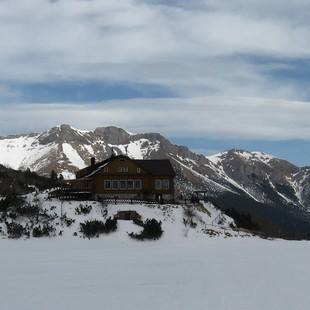Avalanche injury
Every year, more than 150 people die in snow avalanches in Europe and Northern America. Most of them are climbers, skiers and skialpinists. Many of these deaths can be prevented by preventive measures, or by fast extrication of the buried people, appropriate first aid, on-scene triage, and subsequent highly specialized treatment in a suitable healthcare facility. Using this algorithm, you will learn how to proceed during a mountain rescue for a victim completely buried by an avalanche, which has these parameters: the width of the riving 200 m, height breakaway from 0.2 to 1.8 m, length 600 m avalanches, deposition height of 6 m, the estimated weight of 9.960 tons of snow.
Firstly, you will play a role of a member of a group of skialpinists surprised by an avalanche while staying in the Krkonoše mountains. Then, you are going to become a prehospital physician responsible for the on-scene treatment given to people extricated by the mountain rescue service.
Review
The Czech Republic does not belong to Alpine countries with high frequency of avalanches. Nevertheless, there are 39 known avalanche slopes in Krkonoše mountains, where have died over 50 people in last 100 years. The last fatal accidents happened in 2005, 2008, 2009 and 2015. Deaths of afflicted people are mostly caused by asphyxia, sometimes in conjunction with injuries and hypothermia. This training algorithm describes principles of first aid during an avalanche accident. It highlights safety risks, with occur when rescuers move in avalanche field, practices important decisions in therapeutic process or prepares for decision of treatment termination in case of cardiac arrest.
Beside cardiopulmonary resuscitation in common conditions is this therapeutic algorithm totally different. Patients with a circulatory arrest, which caused by hypothermia, can tolerate untreated arrest much longer.
European Resuscitation Council (ERC) tightened indication criteria for treatment by extracorporeal circulation support methods in September 2015. This complicated treatment had been previously indicated in many cases of cardiac arrest caused by asphyxia, but it had been unnecessary. On the other hand, comparatively good availability of high specialized hospital care for hypothermic patients requires perfect procedure in a prehospital phase and prearranged cooperation between an ambulance and specialized clinic. The clinic has to be able start heating by methods of extracorporeal cardiopulmonary resuscitation. Only proper and quick decisions in avalanche field can ensure for patients some chance to survive.
The exemplary case in the algorithm was inspired by real intervention of the air ambulance of the Hradec Králové city executed in Krkonoše mountain (Červinkova bouda area) on 26th December 2008. This unusual case (together with other unusual cases that happened in this year) demonstrated that in place where an avalanche accident happened could also paramedics not-familiar wit avalanche accidents occur and have to deal with it. Practicing the correct procedure in an interactive algorithm is the best way, how to prepare for this rare and very specific situation.
Sources
Kottmann A, Blancher M, Boyd J, Spichiger T, Brugger H. Avalanche Victim Resuscitation Checklist. International Commission for Alpine Rescue. [online]. [cit. 2016-04-13]. Dostupné z: http://www.alpine-rescue.org/ikar-cisa/documents/2013/ikar20131206001112.pdf
KUBALOVÁ, Jana. SMRT/PŘEŽITÍ? POD LAVINOU. Akutne.cz. [online]. 14.4.2015 [cit. 2016-04-13]. Dostupné z: http://www.akutne.cz/res/publikace/smrt-vs-p-v-lavin-kubalov-zzs-jmk.pdf
KUBALOVÁ, Jana. Resuscitace ve specifických situacích – akcidentální hypotermie. Český horolezecký svaz. [online]. [cit. 2016-04-13]. Dostupné z:http://www.horosvaz.cz/res/data/056/010282.pdf
TRUHLÁŘ, Anatolij. European Resuscitation Council Guidelines for Resuscitation 2015. Resuscitation Journal. [online]. 10.2015 [cit. 2016-04-11]. Dostupné z:http://www.cprguidelines.eu/assets/downloads/guidelines/S0300-9572(15)00329-9_main.pdf?
KOŘÍZEK, Viktor. LAVINY – ZÁCHRANA. Alpy4000.CZ. [online]. © 2005-2006 [cit. 2016-04-13]. Dostupné z: http://www.alpy4000.cz/soubory/zachrana.pdf





